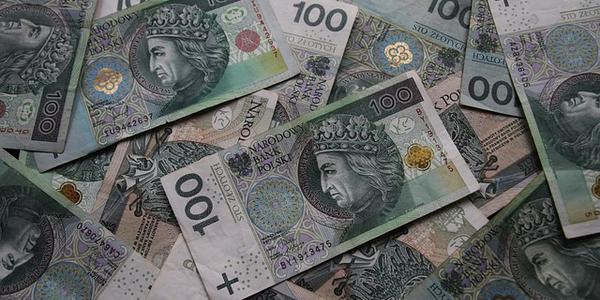Investors have filed a lawsuit against the promoters and sponsors of the Hawk Tuah memecoin, alleging that the project involved the promotion and sale of unregistered securities. The complaint targets a group of individuals and entities involved in the launch, including the Tuah The Moon Foundation, OverHere Ltd, Clinton So, and Alex Larson Schultz, who are accused of promoting the coin to potential investors. The legal filing paints a picture of a campaign that positioned Hawk Tuah not merely as a speculative asset but as part of a broader cultural movement with the promise of substantial growth. The plaintiffs argue that the pre-launch marketing, coupled with the involvement of a well-known public figure, signaled to followers that the project was destined for success, thereby encouraging investment without proper registration.
Background and Timeline: From modest beginnings to dramatic ascent and sharp decline
The Hawk Tuah memecoin entered the market on December 4 with an initial market capitalization of approximately 16.6 million dollars. This early valuation reflected a relatively modest start in the crowded landscape of memecoins, which are often propelled by social media hype rather than traditional fundamentals. Within a remarkably short window—roughly three hours—the token’s market capitalization surged to a peak near 491 million dollars, signaling an intense rush of investor interest and rapid inflows of capital. This meteoric rise, however, was not sustained. After reaching this peak, the token’s value reversed course, and the market capitalization receded to around 41.7 million dollars, marking a dramatic downshift from the pinnacle just hours earlier.
As the price action unfolded, a growing chorus of investors and observers described the launch as a textbook pump-and-dump scenario. The pattern—sharp, concentrated price increases followed by swift declines—led many to counsel caution and to scrutinize the underlying mechanics behind Hawk Tuah’s rapid ascent. The story of Hawk Tuah’s launch quickly became a focal point for discussions about the risks inherent in meme-based crypto assets, particularly those that rely on aggressive promotional campaigns and celebrity or influencer endorsements to drive demand.
In the days following the price surge and subsequent fall, investor concerns intensified on social media platforms, with many claiming that the token’s rise had been driven more by marketing and speculation than by any lasting utility or real-world value. The volatility drew sharp criticism from participants who described the event as emblematic of a pump-and-dump cycle, underscoring the tension between hype-driven market activity and the regulatory and consumer protection expectations that govern securities offerings and investment promotions.
Following the token’s collapse, a notable portion of investors turned their attention to regulatory oversight and the potential for formal action. Complaints to the Securities and Exchange Commission (SEC) emerged as individuals sought to document what they viewed as possible violations and to prompt authorities to investigate whether the Hawk Tuah launch constituted an unregistered securities offering or other prohibited promotional practices. The momentum behind these concerns reflected broader anxieties within the crypto community about the boundaries of investment promotion, disclosure requirements, and the accountability of promoters and early investors in meme-based assets.
Throughout this timeline, a central tension remained: whether the Hawk Tuah launch represented genuine innovation and growth potential or a high-risk marketing campaign designed to exploit investor enthusiasm without meeting the standards applicable to registered securities. This tension formed the backdrop for the subsequent legal actions, public statements, and media discussions that have shaped the ongoing narrative around the Hawk Tuah memecoin.
The lawsuit and named defendants: Allegations, actors, and the core claims
The lawsuit targets a specific constellation of entities and individuals associated with the Hawk Tuah project. The plaintiffs allege that the defendants engaged in the promotion and sale of an unregistered securities offering, a serious claim that implicates securities laws and regulatory expectations around investor disclosure and registration. The core assertion is that Hawk Tuah was marketed in a way that crossed the line from a speculative digital asset toward an instrument requiring regulatory oversight and registration as a security. The plaintiffs argue that the marketing and promotional activities designed to generate investor interest did not comply with applicable securities laws, creating a legal exposure for those involved in orchestrating the campaign.
Among those named in the suit are the Tuah The Moon Foundation and OverHere Ltd, two entities positioned as the organizational or promotional backbone of Hawk Tuah. The inclusion of Clinton So and Alex Larson Schultz reflects concerns about the individuals who were directly involved in promoting the memecoin. The plaintiffs contend that these parties played critical roles in shaping the narrative around the token’s potential and in directing investor sentiment, thereby facilitating a securities offering without the necessary regulatory safeguards and disclosures.
The legal filing emphasizes that the pre-launch marketing portrayed Hawk Tuah as more than a mere speculative asset. It framed the token as part of a cultural movement with significant growth potential, a narrative designed to attract a broad base of investors who might be swayed by the idea of belonging to a transformative phenomenon. This framing, the plaintiffs argue, was intended to bypass ordinary investor protections by presenting Hawk Tuah as a lucrative opportunity rather than an unregistered security.
A key aspect of the complaint concerns the alleged signals sent to potential investors through public figures associated with the project. Specifically, the plaintiffs point to the involvement of a well-known influencer, whose status as a trusted public figure allegedly communicated a degree of credibility and inevitability of success to followers. The plaintiffs contend that this endorsement helped to cultivate a perception of legitimacy and opportunity, thereby encouraging investment under circumstances that may not have fulfilled registration or disclosure requirements.
In addition to the structural claims about unregistered securities, the lawsuit implicitly raises questions about the adequacy and accuracy of promotional messaging. By arguing that the pre-launch marketing framed Hawk Tuah as a cultural movement with vast growth potential, the plaintiffs cast doubt on whether potential investors were provided with sufficient information about risks, the token’s use cases, and the regulatory status of the offering. The complaint’s emphasis on marketing tactics underscores concerns that promotional activities shaped investor expectations in ways that may have misaligned with the legal standards governing securities offerings and investor protection.
As the legal process unfolds, the defendants will have opportunities to respond to the allegations, delineate their positions, and present evidence addressing the claims of unregistered securities and deceptive marketing. The outcome of this legal action could carry significant implications for the balance between promotional communication, investor education, and regulatory compliance in the rapidly evolving space of memecoins and other crypto assets. The case also highlights ongoing debates about the appropriate role of influencers and promotional campaigns in driving investment activity within digital asset markets, and the extent to which such activities should be subject to formal securities regulation and enforcement actions.
Marketing framing, influencers, and the dynamics of trust
A central thread in the Hawk Tuah narrative concerns how the token was positioned to potential investors before and after launch. The plaintiffs’ description emphasizes that the pre-launch phase framed Hawk Tuah not merely as a speculative token but as a broader cultural movement with substantial growth potential. This framing is argued to have distinct implications for investor expectations, because it leverages a sense of community, identity, and belonging alongside financial promise. In the world of meme-based assets, such framing can accelerate demand, as supporters are motivated by social signals, shared narratives, and the aspirational aspects of participation in a “movement” rather than by conventional fundamentals.
The involvement of influential figures is a recurring element in this narrative. The complaint notes that a prominent public figure was associated with the Hawk Tuah campaign, and it contends that this association signaled a level of credibility and momentum to followers and potential investors. This dynamic — the combination of a recognizable personality, aspirational messaging, and a promotional push — is often cited in discussions of how meme coins achieve rapid visibility and investment inflows. The question at hand, from a regulatory and investor protection perspective, is whether such endorsements were accompanied by appropriate disclosures, transparent information about the offering, and an accurate portrayal of the associated risks and status as a potential security.
In this context, the role of the promoters—Tuah The Moon Foundation and OverHere Ltd—takes on particular significance. The plaintiffs argue that these entities were central to the campaigns that shaped investor perceptions, thereby aligning organizational responsibility with the content and timing of promotional activities. The individuals named in the suit, including Clinton So and Alex Larson Schultz, are identified as participants who actively promoted the token, contributing to a narrative that investors could interpret as reliable signals of growth and legitimacy. The legal framing suggests that the combination of organizational leadership, influencer involvement, and targeted marketing created a scenario in which investors could reasonably assume a level of regulatory compliance and protection that was not actually in place.
From a broader perspective, this marketing strategy raises important questions about the boundaries of promotional communications in crypto markets. While marketing and storytelling are legitimate tools for product outreach, they must be balanced with clear disclosures about risks, regulatory status, and the potential for significant price volatility. The Hawk Tuah case thus sits at the intersection of marketing ethics, investor education, and securities regulation — a crossroad that has become increasingly scrutinized as meme assets gain prominence in the crypto ecosystem. The ongoing litigation and public discourse surrounding Hawk Tuah will likely influence how regulators and industry participants think about disclosure standards, influencer partnerships, and the responsibilities of organizers and promoters when presenting high-risk digital assets to a broad audience.
Price action, investor reaction, and the social media chorus
The market performance of Hawk Tuah offers a stark illustration of the volatility that characterizes meme-based cryptocurrencies. The token’s price trajectory and capitalization movements became a focal point for investors and commentators who monitor the mechanics of hype-driven markets. The rapid ascent to a market capitalization well above half a billion dollars—reaching roughly 491 million dollars within hours of launch—demonstrated the capacity of social momentum to accelerate demand in a relatively short timeframe. Yet this ascent was unsustainable for many participants, with the price and capitalization subsequently retreating to levels far below the peak, underscoring the volatile and fragile nature of such surges.
This sequence of events contributed to a broad perception of Hawk Tuah as emblematic of a pump-and-dump dynamic. A pump-and-dump scenario typically involves a sustained promotional push that inflates demand, followed by a rapid retracement as early investors exit and the promotional activity loses momentum. Investors who experienced the downturn voiced frustration on social media, describing the launch as a classic example of this pattern. The discourse highlighted the tension between the allure of quick gains and the risks of participating in markets where price movement is heavily influenced by promotional campaigns rather than underlying business fundamentals or utility.
In the aftermath of the collapse, investor complaints to regulatory authorities and discussions about accountability intensified. Some investors turned to the SEC, encouraging formal inquiries into the nature of the Hawk Tuah offering and the sufficiency of disclosures. The emergence of these complaints signaled a willingness among some members of the investing community to pursue redress through regulatory channels, reflecting broader anxieties about the extent to which meme coins can operate within the boundaries of securities laws and consumer protection standards.
The social media dimension of the Hawk Tuah saga further amplified the public narrative surrounding the event. Prominent voices in the crypto community, including well-known content creators and independent researchers, weighed in with opinions about the legitimacy of the launch and the accuracy of claims about the token’s potential. This ongoing dialogue contributed to an ecosystem-wide examination of how information (and misinformation) circulates around memecoins, how investors gauge risk, and how communities police or scrutinize marketing practices within digital asset markets. The resulting conversations have the potential to shape future investor behavior and regulatory expectations as the crypto landscape continues to evolve.
Public statements, defenses, and the role of information in a fast-moving market
In the wake of the token’s dramatic price movements and subsequent scrutiny, key individuals associated with Hawk Tuah issued public statements to address accusations and circulating rumors. Haliey Welch, the social media influencer who formed the basis of the token’s narrative, publicly denied allegations of insider trading by herself or her team. This denial is a critical data point in the broader discussion about whether promotional campaigns were conducted with transparent, fair, and compliant practices, or whether undisclosed arrangements may have influenced trading activity and investor decisions.
Another high-profile voice in the discourse was the popular YouTuber known as Coffeezilla. This commentator entered the conversation with a public effort to contextualize the Hawk Tuah launch and to dispel certain rumors circulating within the crypto community. Coffeezilla argued that the launch did not constitute a rug pull, challenging the notion that the project was designed to defraud investors. Instead, the YouTuber contended that a substantial portion of the token was pre-sold to “strategic advisers” who subsequently sold their holdings earlier in the lifecycle of the launch. This assertion points to a nuance in the narrative: while insider selling and early offloading may have occurred, the broader claim of a deliberate scam or rug pull, according to Coffeezilla, was overstated or inaccurate.
In presenting these positions, Welch and Coffeezilla contributed to a layered discourse about responsibility, transparency, and the interpretation of events surrounding Hawk Tuah. Welch’s denial of insider trading speaks to concerns about the integrity of information flows and the potential for personal or reputational incentives to shape trading behavior. Coffeezilla’s analysis focuses on the mechanics of the pre-sale and early distribution model, arguing that the pre-sold tokens were allocated to certain advisers and that those advisers sold early, which can create complex incentives and outcomes for various stakeholders. The conversations surrounding these claims illustrate how information can be interpreted differently within a fast-moving market, and how narratives surrounding promotions and pre-sales can influence investor perceptions and decision-making.
The broader implications of these public statements touch on the credibility of influencers and the reliability of information disseminated through popular crypto media channels. When influencers publicly defend a project or deny specific allegations, their audiences may be swayed by perceived legitimacy, even as questions remain about the completeness and accuracy of disclosures. Conversely, journalists, independent researchers, and commentators who scrutinize these narratives contribute to a more critical market discourse, which can help investors weigh potential risks and avoid overreliance on promotional hype. The Hawk Tuah case thus serves as a case study in how information, reputation, and media narratives intersect with regulatory expectations in a high-velocity crypto environment.
Conclusion
The Hawk Tuah episode draws attention to the delicate balance between promotional activity, investor education, and regulatory compliance in the realm of meme coins and digital assets. The lawsuit against the promoters and participants highlights concerns about unregistered securities offerings and the adequacy of disclosures in campaigns that leverage influencer endorsements and culturally resonant messaging. The dramatic price action—an initial surge to hundreds of millions in market capitalization followed by a steep decline—and the ensuing social-media controversy illustrate both the potential for rapid market gains and the significant risks that accompany such dynamics.
Public statements from involved individuals and critics alike underscore the complexity of assessing responsibility in cases where marketing narratives, pre-sales, and influencer involvement intersect with fast-moving market behavior. The Hawk Tuah narrative emphasizes the need for clarity around the legal status of meme coins, transparent disclosure of risks, and a rigorous approach to investor protection in a space characterized by rapid innovations and evolving regulatory frameworks. As regulators and market participants continue to observe and respond to this case, the enduring takeaway for investors is to approach meme-based crypto assets with heightened diligence, to seek verifiable information, and to recognize the limits of hype in assessing legitimate investment opportunities.




